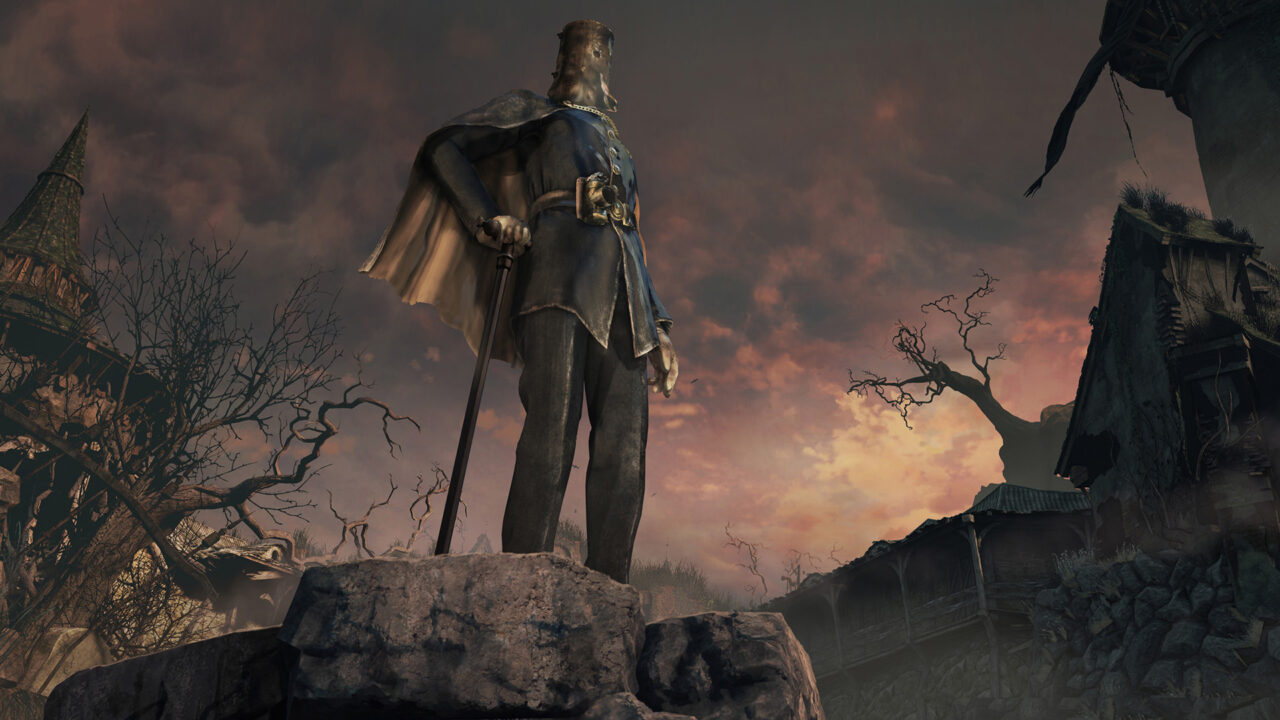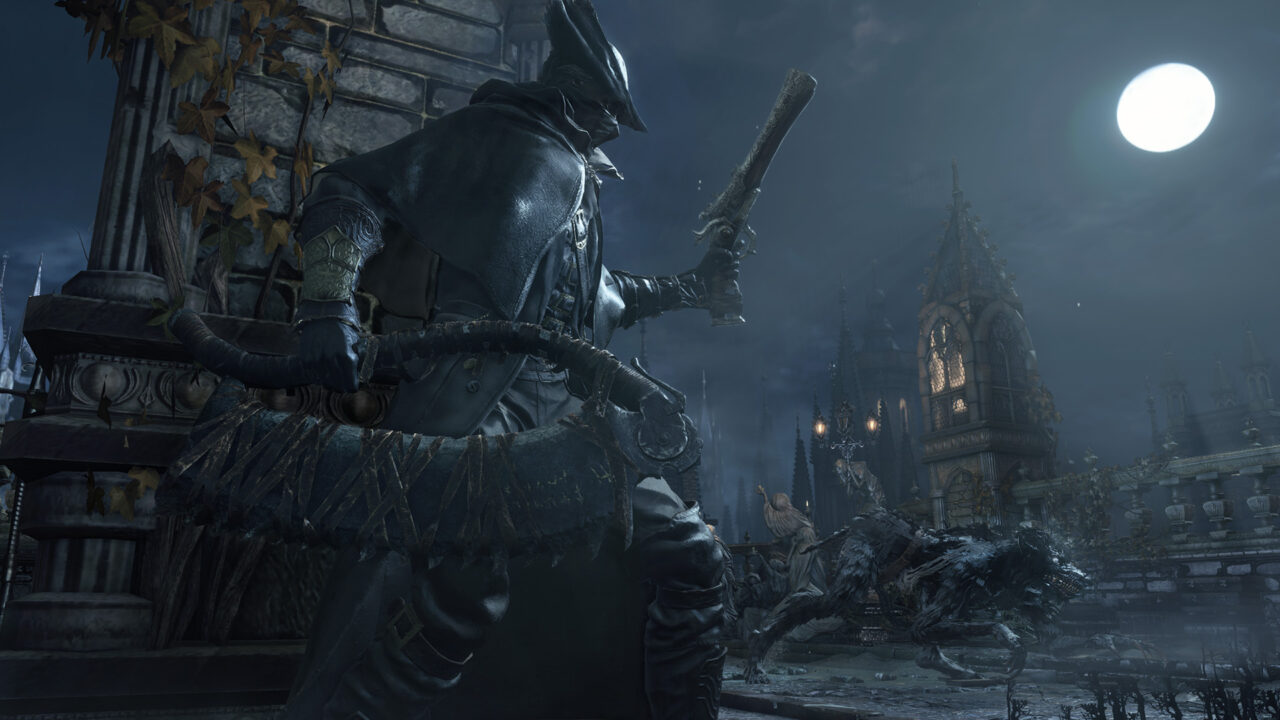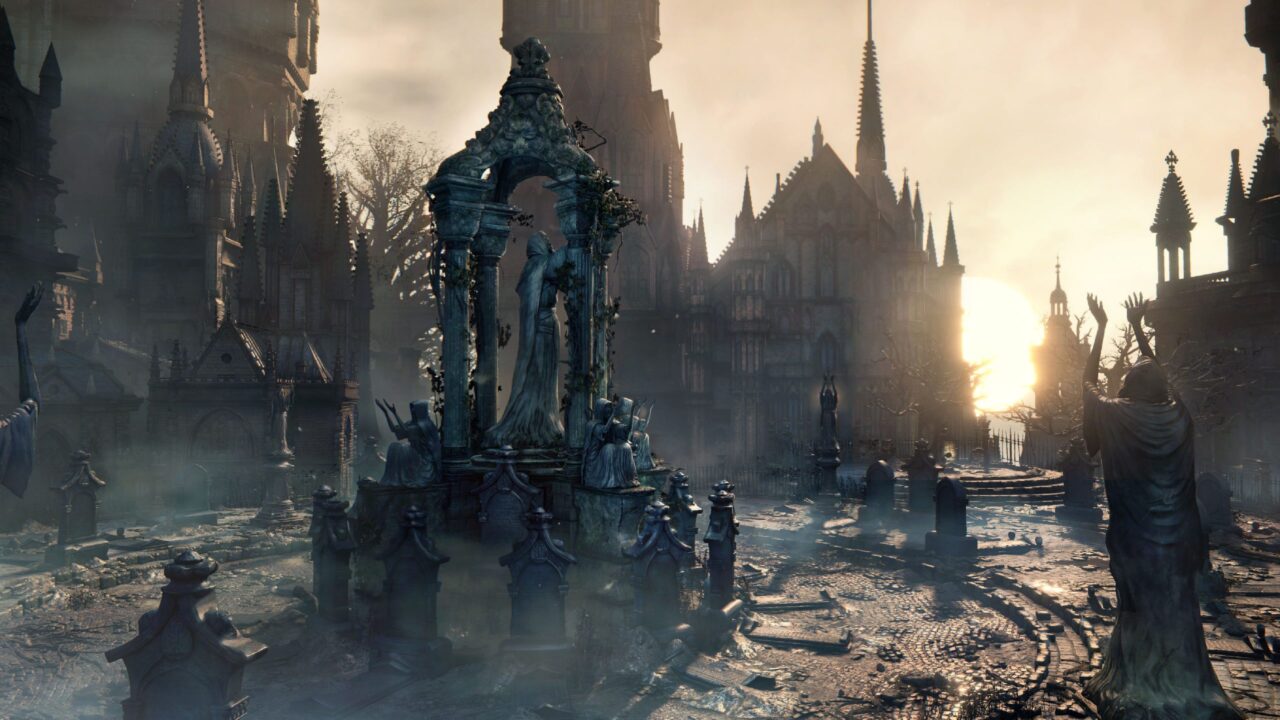Michael Sollosi
Bloodborne is a revelation. An intense action RPG with incredible freedom and drama, draped in a blood-soaked Gothic aesthetic that’s brutal and beautiful, Bloodborne‘s environments, boss fights, and hidden secrets get more fascinating by the minute.
Bloodborne is the game that gave us the term “Soulsbourne,” as it has all the hallmarks of Demon’s Souls and Dark Souls, but changes some key terms (“souls” to “blood echoes” etc.) and necessitated a new name for the genre. Key concepts behind levels, stats, and resources are nearly the same as a Souls game; the biggest fundamental change is speed. Bloodborne is not a game where a heavily-armored shields-up strategy will work at all. Players need to constantly move and attack for success, because if you don’t take advantage of those systems, your enemies will. It’s exhilarating.
I’ve played monthly game journals for Retro Encounter several times a year since 2015, and this is one of my favorite first playthrough experiences. I’m already thinking about what weapons and stats I’ll focus on when I start anew, possibly as soon as next month. I’m so glad I found my worth in the waking world.
Aleks Franiczek
I’ve played each of the core Souls games and their siblings at least once now and have heaps of praise for them all (yes, even Dark Souls II). Despite the obvious similarities between the games, they all manage to have a distinct identity. Bloodborne isn’t my personal favorite of the bunch, but I wouldn’t argue with anyone who says it’s the best. It’s brimming with twisted personality and a logic-defying world that feels like a perfect match for the established Souls conventions.
I started this NG+ run right after putting some time into Lies of P, which is a well-polished but pretty overt copycat, and I immediately appreciated how Bloodborne is no puppet, but a real boy. The story is beyond cryptic yet holds a palpable thematic weight. Yharnam is not just an aesthetic, but a living (or at least active) place brought to life through its immaculate level design and thoughtful enemy placements. Everything you see and hear has potential meaning to lore-hunting.
And the series’ combat certainly leveled up with Bloodborne, which traded the slow, methodical jankiness of the earlier games for intense, bursting action that draws you into the beast hunt. And then there’s the trick weapons. As if the game didn’t already have plenty of reasons to revisit, I’m already thinking about which of these stylishly satisfying hoonter tools I’d use on a next run.
We were (understandably) busy celebrating Bloodborne’s many achievements in these episodes, but some of its issues also stuck out to me more on this playthrough. Build variety is half-baked. Chalice dungeons suck and the game expects you to grind upgrade material in them. Most significantly, the second half of the game is a clear downgrade from the seamless design of the first. Eventually, the difficulty starts feeling random rather than carefully tailored. The levels lack some of the expressive geometrical layouts of the earlier ones. Several of the bosses are poorly designed or slogs. Still, it’s more a testament to the near perfection of the first half that these issues stick out. Just give me The Old Hunters DLC and all is forgiven. See you next hunt.
Gio Castillo
Six years ago, I wasn’t an action or horror game fan. I had played my fair share of spooky and shooty, but I mostly stuck to turn-based RPGs and adventure games. Long story short, and partly to break from that monotony a little, I decided on a whim to try Demon’s Souls.
Demon’s Souls, my first real venture outside my comfort zone, was great. I immediately vibed with its dark and depressing take on traditional fantasy, and the masochist in me enjoyed dying a lot for some reason. Not long after, the hunger (bloodthirst?) would rise in me again, and so I ended up starting Bloodborne.
Bloodborne blew my mind. My exposure to cosmic horror up until that point had been The Mist and references to C’thulhu here and there, so the game’s slow metamorphosis from Victorian to Lovecraftian caught me completely by surprise. And the combat! Oh, Amygdala, the combat in this game remains my favorite to this day because of its incredible parry and rally options. Sometimes I feel like I’m still chasing the thrill I experienced in my first Bloodborne playthrough.
In the end, I love Bloodborne because it widened my horizons. It’s because of this game that I’m a FromSoft homer and a budding horror aficionado. Coming back to it for Retro Encounter reminds me that I’m getting more out of life because of Bloodborne, and I’ll always be grateful for that.
Zach Wilkerson
Bloodborne didn’t just make me a Hunter, it turned me into a Soulsborne monster.
I wish that was an exaggeration, but it’s not. I’ve been scared of FromSoft games for years, never getting more than an hour or so in, and after dying a dozen or so times, I’d quit. So, I spun up Bloodborne about a month and a half before recording, telling myself that it might take me a month, but I was going to push through. I was going to do it.
A little over a month later, I’m about to complete my fifth FromSoft game (Dark Souls III). I am an addict. Bloodborne is, in my eyes, the perfect entry point; as much as I enjoy the rest of the “meta” series, this is my favorite. Everybody knows that Soulsborne games are exciting because they teach you to “git gud,” and every game in the series does that to some degree or another.
But, for me, Bloodborne is the perfect blend of where the series started, and where it’s going. The combat still rewards patience and requires you to effectively use i-frames to dodge attacks, but the brilliant addition countering to gain back health pushes you to be aggressive, as you must in Sekiro, while still moving away from enemy attacks. I like how there is more direction here than in Dark Souls, but shortcuts are still critical for the (inevitable) run back to the boss. I even like that Bloodborne has fewer build options – it allows the developers to bring a fine sheen to the combat, while still allowing some of the customization that is stripped out of later entries.
But we all know the atmosphere of Bloodborne is its best feature. Blending standard horror elements with the more cosmic variety, all set in a deeply unsettling Victorian backdrop, is a frankly brilliant move. This is maybe most obvious with the truly brilliant sound design: the blood curdling screams of Bloodborne are unmatched.
Folks, Bloodborne is a special game. Its difficulty, atmosphere, and opaque storytelling might not be for everyone. But it turns out, it absolutely is for me.






